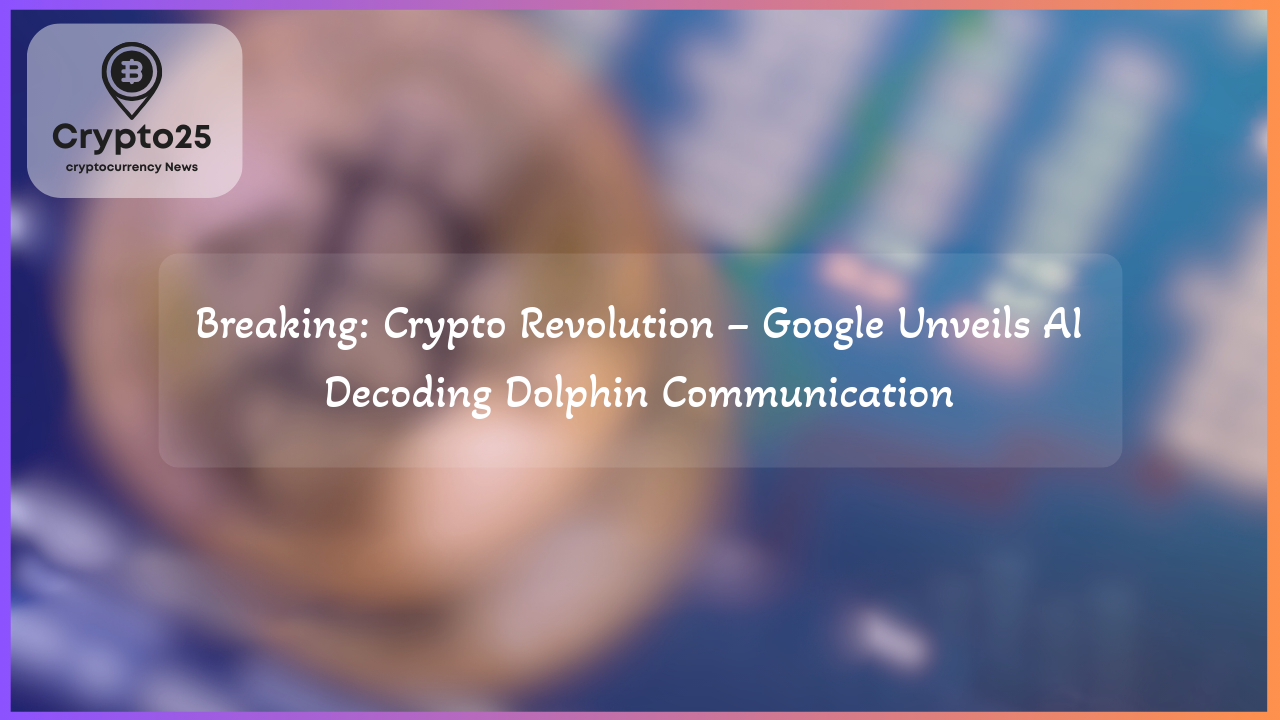
Advancements in artificial intelligence are steadily transforming our approach to understanding the natural world, and the latest innovation targets one of its most enigmatic inhabitants: dolphins. Google’s DolphinGemma, an open-source AI model developed in collaboration with the Wild Dolphin Project and Georgia Tech, aims to decode dolphin communication patterns. This cutting-edge initiative represents a remarkable step toward deciphering the highly complex vocalizations of these intelligent marine creatures.
### How Google’s DolphinGemma Elevates Dolphin Communication Research
The DolphinGemma AI model stands out as a pioneering tool for studying dolphin communication, particularly among Atlantic spotted dolphins in the Bahamas. Built on decades of data amassed by the Wild Dolphin Project since 1985, this AI analyzes patterns in clicks, whistles, and burst pulses, vital for these mammals’ communication. What distinguishes DolphinGemma is its ability to identify recurring sound structures while autonomously generating dolphin-like vocalizations.
This revolutionary capability could uncover whether dolphin vocalizations amount to a form of language, resolving long-debated scientific questions. The model operates using Google’s SoundStream tokenizer to predict sound sequences similar to how natural language processing engines predict human words. Impressively, DolphinGemma’s lightweight design allows it to run on mobile devices, such as the Google Pixel phones researchers currently use in the field. The transition to smartphones reduces reliance on bulky equipment, a significant benefit for researchers in marine environments.
| Title | Details |
|---|---|
| Model Parameters | 400 Million |
| Data Source | Wild Dolphin Project (1985–Present) |
| Device Compatibility | Google Pixel Smartphones |
By integrating AI into dolphin vocal analysis, researchers are no longer limited to manual transcription, an incredibly labor-intensive process. DolphinGemma bridges this gap, offering a glimpse into the previously hidden complexities of animal communication.
### Dolphin Communication Meets Artificial Intelligence
Dolphin vocalizations are fundamental to their social structure, used for activities such as hunting, navigation, and conflict resolution. Using the CHAT (Cetacean Hearing Augmentation Telemetry) system, DolphinGemma pairs AI-driven sound patterns with specific objects or behaviors, advancing the potential for human-dolphin interaction. For instance, synthetic whistles generated by the system have been aligned with objects dolphins enjoy, including sargassum and scarves. This integration may pave the way toward a shared vocabulary that deepens our interaction with dolphins.
Such intricate levels of communication analysis wouldn’t be possible without the long-term commitment of projects like the Wild Dolphin Project. Researchers have categorized signature whistles, mother-infant vocalizations, and courtship-related clicks to decode behavioral contexts. DolphinGemma, layered with synthetic whistle production and advanced algorithms, represents the next leap in this research journey.
Google also has plans for upgrades to more advanced Pixel 9 devices during future research seasons. These additions will enhance real-time sound processing through dual deep learning models and allow simultaneous microphone and speaker operations. The advancements hold promise for faster identification of patterned vocalizations, facilitating more effective communication with dolphin pods.
### Global Implications of AI-Powered Marine Communication Studies
DolphinGemma is not an isolated initiative; many other AI-powered projects are on a quest to uncover communication within the animal kingdom. Initiatives like the Earth Species Project’s NatureLM focus on multi-species analysis, determining distress signals, play sounds, and emotional undertones. Similarly, Project CETI investigates sperm whale clicks, hypothesizing a “phonetic alphabet” structure within their vocalizations.
The cumulative findings from such projects could redefine how humanity interacts with the animal world. From aiding conservation efforts to understanding animals’ roles in broader ecosystems, AI-powered sound analysis offers far-reaching potential. As with DolphinGemma, AI’s deployment for specific species vocalizations necessitates constant refinement and interdisciplinary collaboration.
Google’s vision extends beyond Atlantic spotted dolphins. Researchers anticipate scaling the AI model toward other marine species, broadening its influence. As researchers at New York University experiment with infant-based AI learning methods, the technologies for understanding natural communication will undoubtedly become more human-like.
In conclusion, DolphinGemma is ushering in a new era of exploration into marine communication. By combining decades of research with advanced AI technologies, Google and its collaborators are unraveling the mysteries behind dolphin vocalizations. Projects like these are more than technological marvels—they represent humanity’s desire to connect with the natural world in new and meaningful ways. As AI evolves, so too will our understanding of the dynamic, complex, and evocative language of the ocean’s most intelligent creatures.
